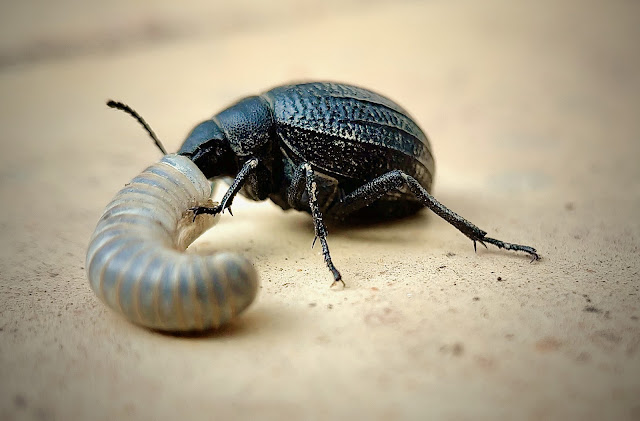I like to take macro photos of insects, spiders and other small animals. But the photos are different when I get lucky and get to photograph them “doing something”: eating leaves, fruits or pollen, transporting food, repairing their den or web, mating, sleeping, or even hunting and devouring other animals as seen in the following photos I have taken over the last year.
You can see my other macro photos on Instagram and Mastodon. Almost all of them are made with an iPhone with a homemade lens attached.
An Araneus angulatus spider wraps the silk produced by its anal glands around a damselfly it has just captured.
Another Araneus angulatus next to the remains of one of its prey, apparently a bee. They usually hold one of the threads of their net with one leg to detect if a prey is trapped.
A large female Argiope bruennichi (wasp spider) in her web approaching the silk envelope in which she keeps a prey she will later devour.
In this case it is a very small dwarf mantis (Ameles spallanzania) eating a prey according to its size: an ant.
Normally, bush crickets (Phaneroptera nana) feed on vegetables, but this one has decided to try what ants taste like.
This, believe it or not, is a ladybug larva (Coccinella septempunctata). The adults are ferocious aphid hunters, but the larvae are even more so, going in like a bull-dozer on aphid clusters.
As I was about to photograph this dragonfly (Sympetrum fonscolombii), it suddenly disappeared in a quick 2 or 3 second flight to land again on exactly the same branch. In its mouth it carried a small insect that it began to devour rapidly.
This beetle (Pimelia punctata) has not hunted a myriapod, but inspects its shell for any edible remains.














No comments:
Post a Comment